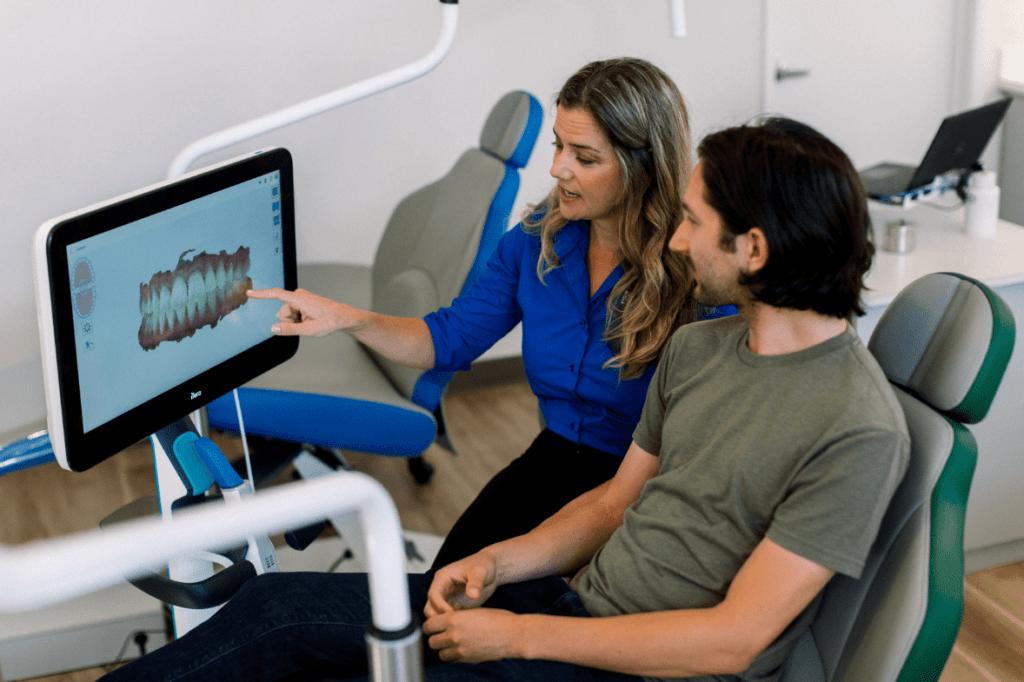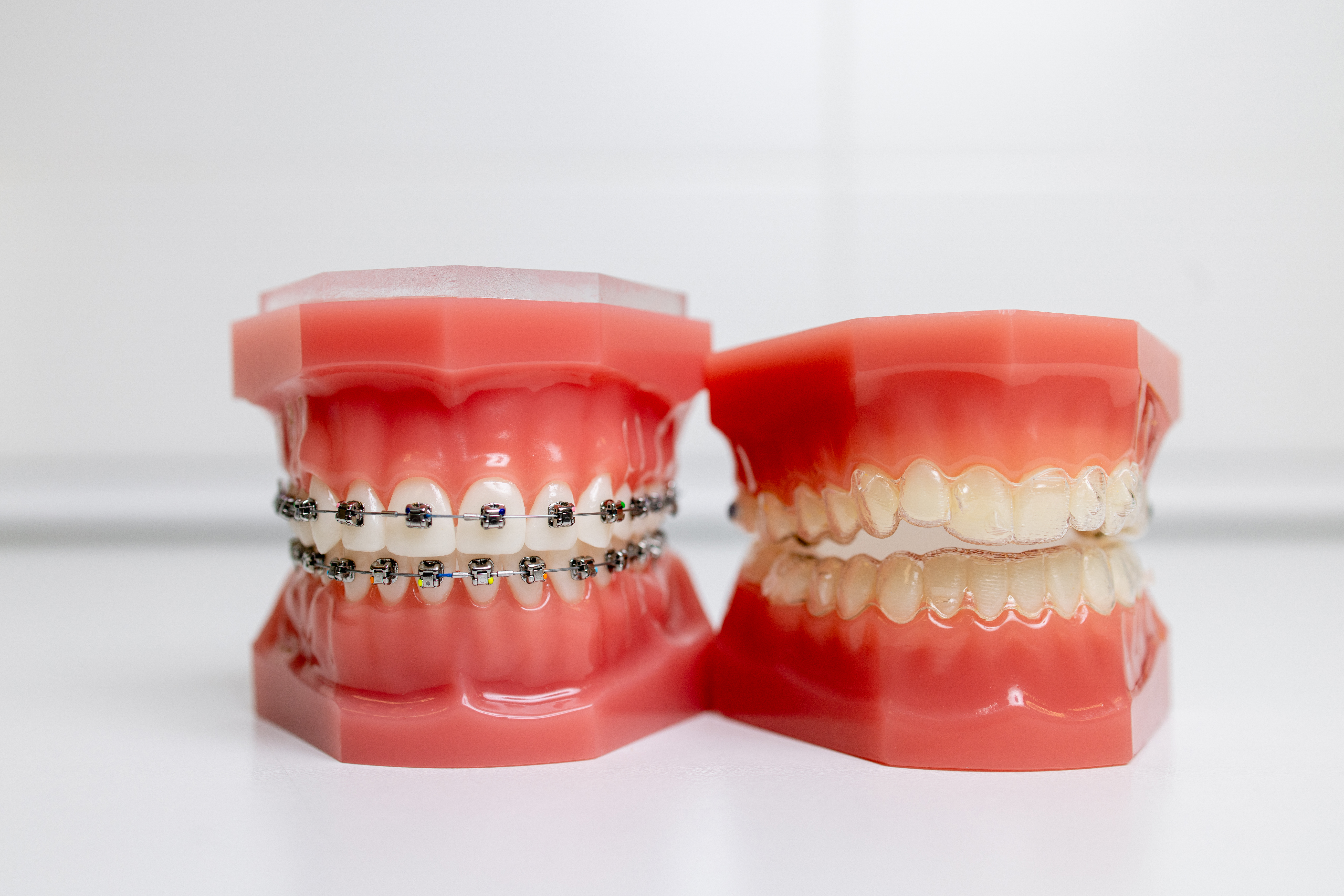To move teeth, we have to put constant pressure on them for a period of time. And we have two main ways that we do that – with fixed (glued on) braces and with removable aligners (Invisalign). There are reasons in certain cases where one method of moving teeth is preferred, but many patients can choose which sounds like it will be most successful. The impact of choosing the right orthodontic treatment for your lifestyle is quite different, so let’s review the two.
Braces
Braces get glued on to the front of your teeth and are connected to a wire with small colored ties. In most cases, we don’t need the metal bands that go around teeth or anything special like an expander or headgear. If there’s a reason why these additional items are necessary, we’ll have discussed it specifically at your consultation appointment. Braces feel scratchy and sore for about the first week you have them, but then {really and truly!} people get used to the feeling of the braces and hardly notice them. The soreness from ‘tightening’ usually lasts 2-3 days after each appointment – not the entire time you have the braces on. You typically come in for adjustments every 4-6 weeks.
Pros:
The best part about braces is that you (or your child) can’t lose or forget them or not put them on because you’re tired or angry or forgetful, and they work 24/7 after we’ve had an appointment. You also (obviously!) can eat and snack with them in, being careful to eat a little more mindfully than you had before.
Cons:
For some people, the biggest CON is the look of the braces (and for other people that’s not a big deal!). Braces are little bits of metal and wire glued into your mouth, so there will likely be some sore or scratched up parts throughout treatment. You have to be more careful with how you eat – cutting or breaking food into small pieces – and avoiding very hard or sticky foods. And you do have to be more careful with how you brush – we’ll give you some special flossers and little picks to help clean around the brackets and wires. There’s also the possibility of something breaking or poking or going wrong when you can’t get to the office – either you’re out of town on the office is closed. And that can be challenging to troubleshoot. Most people say that the pressure of a braces adjustment is more sore than the pressure from changing an aligner.
Type of Lifestyle:
For people who are busy and away from home a lot, eating, drinking (including coffee!), or snacking often throughout the day, or overall forgetful, braces are often a better choice.
Aligners
In our office we use the aligners (the clear removable trays) made by Invisalign. Usually, people wear upper and lower aligners full time (22 hours per day) for about ten days before switching to the next ones. You come to see us approximately every two months for a check in and to get the next few sets of trays. The aligners can be worn while you drink water, but should be removed for any other food or drink and you should brush your teeth before replacing the aligners.
Pros:
For most people, the look of aligners is the biggest PRO. They don’t look or feel like braces, but they are not completely invisible. There are no restrictions on what you can eat or drink when the aligners are out and there are no special tricks or tools to clean your teeth. Also, most people describe the pressure from a new aligner as a little tightness, but not the sore ache from braces.
Cons:
They have to be worn to work!! Without 22 hours of wear each day, we simply don’t get the tooth movement and results that we hope for. And meeting the 22 hour goal is really challenging for some people. Having to brush your teeth multiple times a day is also challenging for some – if you say “there is no way I’m brushing in public, or 5-6 times per day”, then this may not be a good choice. Also, you have to not lose them and remember to change them as directed. Some people struggle with the logistics and maintenance as it’s just ‘one more thing’ to keep up with.
Type of Lifestyle:
People who aren’t big snackers or coffee/tea/evening drinks drinkers do best reaching the 22 hours. People who want the tooth movement changes but really don’t want braces can also be very motivated to do well with aligners. Also, people who are meticulous in their habits and routines are also most successful with this type of treatment.

Let the Laurent Orthodontics team know if you have any questions about either method, and give us a call at (707) 938-5255 for your free consultation to discuss your teeth and choices today!
 Free Consult
Free Consult
